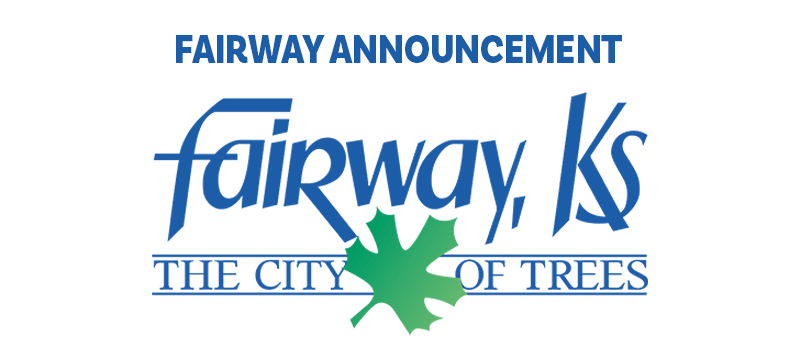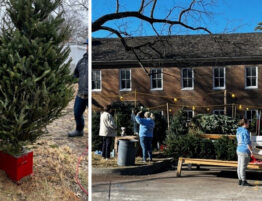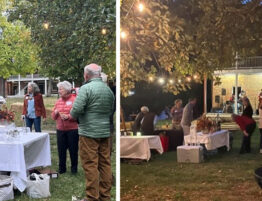
Last week, the City of Fairway learned that Shawnee Tribal Chief Ben Barnes contacted KU and requested that work to conduct a Ground Penetrating Radar (GPR) Study at the Shawnee Indian Mission be halted. Chief Barnes sited concerns regarding “deficiencies” and “broader motives” but to the City’s knowledge, there has been no articulation of these concerns.
Here are several important facts the City would like to share with residents regarding the potential study:
- The study was to be conducted by Kansas Geological Survey (KGS), a research and service division of the University of Kansas. KGS is nationally recognized for their forensic and archaeology geophysics research program and has successfully completed studies like this in the past.
- Chief Barnes has been making public calls for a GPR study of the site for more than a year. However, the recent attempt by the Kansas Historical Society (KHS) to conduct this vital research is the second time Chief Barnes has worked to prevent the research from occurring.
- The Shawnee Tribe has made repeated statements that they were not consulted prior to the GPR work. In fact, the KHS reached out and held an in-person meeting with Chief Barnes in August of 2022 and provided a copy of the project scope and offered him the opportunity for formal consultation before the KHS executed a contract and before any work began. The Shawnee Tribe was the first to be offered the opportunity to provide consultation.
- KHS contacted all tribes who have expressed an interest in not just the Shawnee Indian Mission but all of Johnson County. To date, the Shawnee Tribe is the only tribe to object to the project while other Tribes have stated they believe the work should move forward.
More about the site: For centuries (some would argue since time immemorial) this area was the aboriginal home of the Kanza, known today as the Kaw. With the Treaty of 1825, the Kaw’s agreed to a reduction of their twenty-million-acre domain, which comprised roughly the northern half of future Kansas, to a two-million-acre reservation. This led the government to establish several reservations for tribes, including the Shawnee, Wyandotte, Ottawa and others who were being forced west. The Shawnee Reservation contained 1.6 million acres in eastern Kansas.
In July 1830, Chief Fish, leader of the Shawnees, requested a missionary through their Indian agent. A missionary society was established in September of that year and Reverend Thomas Johnson was appointed missionary to the Shawnees. The Shawnee Indian Mission was relocated from Turner in Kansas City, KS to present day Fairway in 1839 where it operated until 1862.
In the Treaty of 1854, the Shawnee ceded the entirety of their reservation to the government which, in turn, receded 200,000 acres back to the Shawnee to establish individual ownership allotments for Tribal members. In an agreement in 1869, the Shawnee agreed to become citizens of the Cherokee Nation located in present-day Oklahoma.
Motives for the future: Since becoming involved in August of 2020, Chief Barnes has expressed conflicting views about the Shawnee Tribe’s future involvement with the site. To the KHS, Chief Barnes has stated he wants a partnership with them and expressed the City should not be involved. To the City, he has expressed that he wants a partnership with the City and for KHS to be out. Eventually, Chief Barnes expressed separately to both the Kansas Historical Society and to the City of Fairway that his goal is for the State of Kansas to convey the Shawnee Indian Mission to the Shawnee Nation. The KHS is on record opposing such a conveyance due to its historical significance to Kansas not just while it operated as the manual labor training school but due to other events and time periods as they related to Kansas’s history. Further, Chief Barnes has not made any commitments about what he and the Shawnee Nation view as the future use of the land if they become owners of the site.
What happens next: It is anticipated that Chief Barnes will work with the Shawnee Tribe’s lobbyist and their public relations firm to have a bill introduced into the Kansas Legislature in January of 2023 for the conveyance of the land from the State of Kansas to the Shawnee Nation. The City of Fairway has been working with advisors as to how to preserve this National and State Historic Landmark that resides in our City.
Over time, a handful of lawsuits have been brought by Shawnee Tribes (there are currently three federally recognized Shawnee Tribal Nations) to acquire land that was once part of the 1.6-million-acre Shawnee Reservation from 1825-1854, including the Shawnee Indian Mission. In each case, the courts have sided against the Tribes primarily due to the fact that the Treaty of 1854 terminated the reservation when the Shawnee’s ceded it to the government. Another prevailing fact was that the Shawnee were compensated for the land when it was given to the government.
Since our first meeting between the City and Chief Barnes, we have lauded the opportunity to work with the Shawnee in providing an interpretation at the Mission which tells its specific story through the Native American lens in a way that is factual and verifiable. The KHS, the City and its partner, the Shawnee Indian Mission Foundation, continue to want the Shawnee Tribe, along with other tribes whose children attended the school, to be a part of telling the Shawnee Indian Mission’s story.
As stated in a previous announcement, the hope of the KHS, the City and the Shawnee Indian Mission Foundation is to be able to move forward with the study to further our knowledge and understanding of the site. We believe it is important to learn the unvarnished history of the site and to share it with the community. There are many stakeholders when it comes to the Shawnee Indian Mission State Historic Site and we believe all history is relevant and worth preserving and sharing for generations to come.
We will continue to provide updates when we have more information to share.




